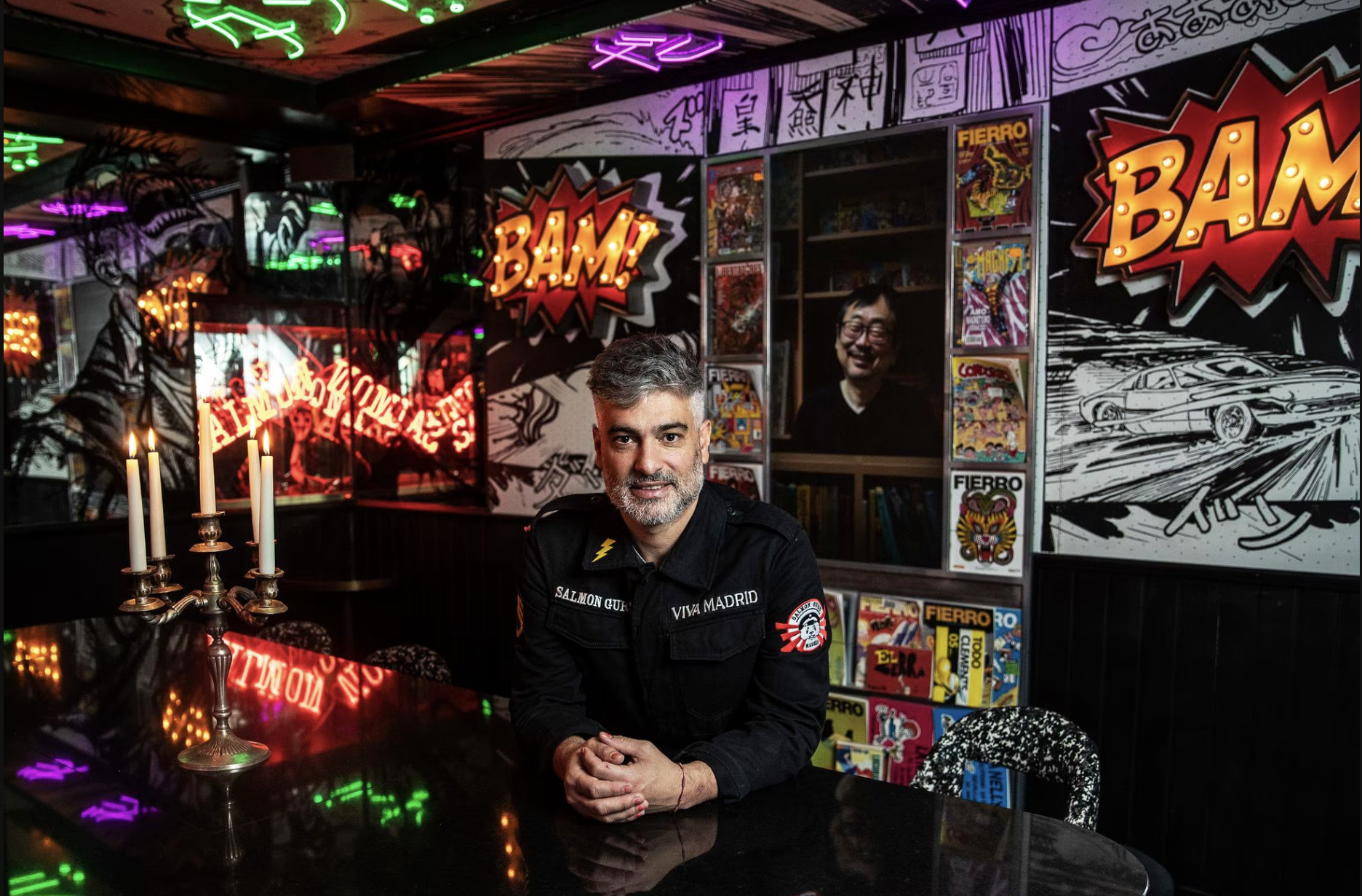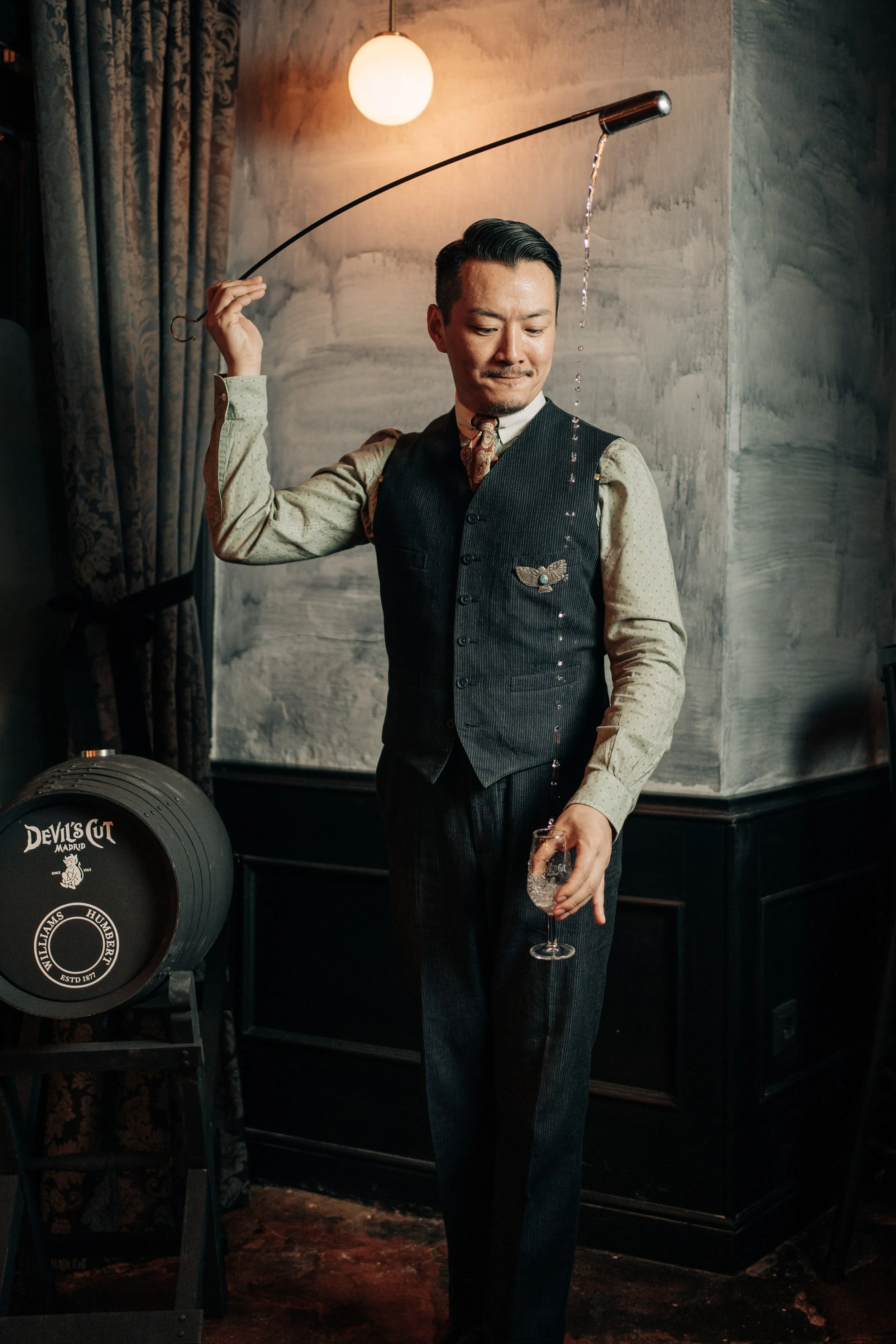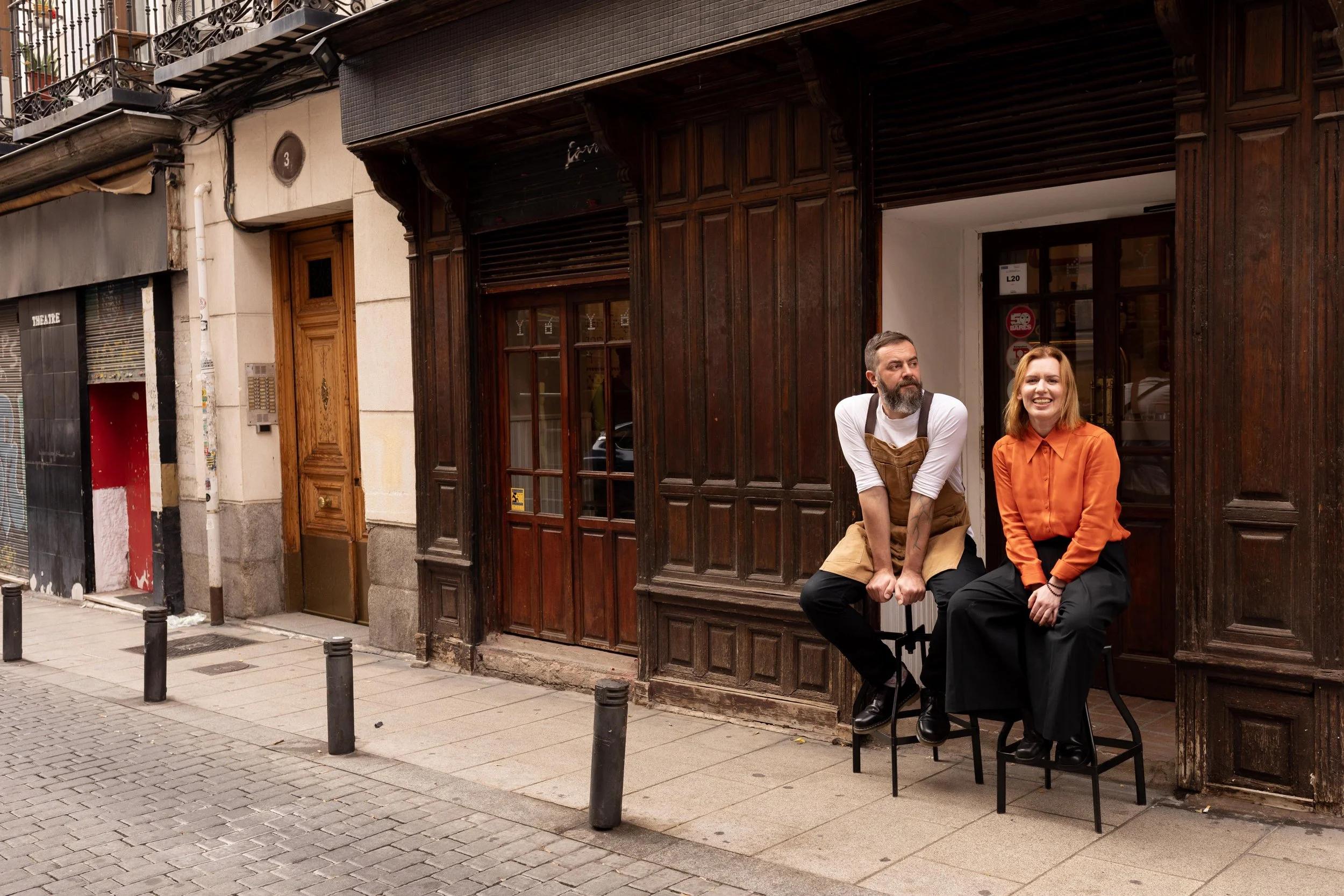Madrid
In addition to historical landmarks and great museums such as Prado and Reina Sofía, Madrid has a thriving bar scene that strikes the right balance between old and new. We take you on a tour of the Spanish capital, including the Huertas and Chueca districts, where Madrid-based drinks writer Francois Monti is our tour guide.
Francois Monti shared his knowledge of the history of bar culture in Madrid: “Madrid has a very strong cocktail culture, beginning in the 1920s and 30s. Bar Chicote was founded in 1931 and was Spain’s first American Bar. Hemingway felt it was the best bar in the world which inspired him to pen two short stories set in Chicote. In this period, great cocktails could be found throughout Madrid, including bars, hotels, theatres and even cinemas. Although cocktail culture was hurt by the civil war (1936 to 1939), the tradition of a good Dry Martini and Gin Fizz persisted in Madrid’s old school bars, from the 40s all the way to the 80s.
A second boost to Madrid’s cocktail scene happened in the late 2000s and early 2010s, led by bars such as Le Cabrera, O’Clock, Belmondo and Salmon Guru, where new cocktail techniques were introduced to Madrid. However, it was not until the last few years that the Madrid bars scene has really come into its own. What is very striking is that one can now find quality cocktails almost everywhere, much like 100 years earlier. Many people dissuaded Diego Cabrera when he wanted to open Salmon Guru in the Huertas neighbourhood, which was previously overrun by tourists looking to get drunk with cheap shooters. Now if you walk in a 5-minute radius around Salmon Guru, you can find ten quality cocktail bars. These days, both locals and tourists keep Madrid bars packed on most nights.”
We start our bar tour of Madrid in Huertas, and no trip there is complete without a visit to La Venencia, Madrid’s historic Sherry bar. As Monti explains “There are no photos, no tips, just good Sherry.” La Venencia is a 1930 tavern featuring wood casks, dusty vintage bottles serving five types of Sherry alongside rustic tapas. However, given the owners’ desire to maintain the charm of the historic Sherry bar with its no-photo policy, it was not possible to do a feature on this shrine for Sherry lovers.
Viva Madrid
Only 100 m away from La Venencia is another historic bar, Viva Madrid at Calle de Manuel Fernández y González, 7. This tavern is one of Madrid's oldest establishments, in operation since 1856, and was lovingly reopened in 2018 by Argentine bartender Diego Cabrera. Viva Madrid pays tribute to the old traditions of the aperitif and has maintained its original construction after the relaunch, including its façade, the ceramic and tile interior, and the bar counter which dates back to the 1920s. Not to be missed is Cabrera’s modern interpretation on the Combinacion cocktail, which in the 1940s was the most popular aperitif cocktail in Madrid. As legend has it, the Combinacion was the tipple of choice of Salvador Dalí at Viva Madrid. Monti, who helped design the vermouth program at Viva Madrid, suggested that Cabrera think of Combinacion as more of concept than a precise recipe. As Monti explains: “The Combinacion is the quintessential Spanish cocktail – vermouth and gin, in varying proportions. There is also maybe something bitter and maybe something sweet, and the drink is served all over the country.” Cabrera’s version, which is called Media Combinacion, features 20 ml London dry gin, 50 ml fortified wine blend (3 parts sweet vermouth to 1 part Amontillado Sherry) and 4 drops of Angostura bitters stirred in a rocks glass with ice and garnished with half a lemon slice and a lemon twist.
Diego Cabrera can be credited for helping kick start the second Golden age of cocktails in Madrid, first with Le Cabrera in 2008 and then with Salmon Guru in 2016 which is located at Calle de Echegaray, 21. The eclectic Salmon Guru, which has since expanded to Dubai and is set to open shortly in Milano, is known for its neon bright atmosphere and adventurous cocktails.
In 2023, Cabrera renovated Salmon Guru Madrid, dubbing the project RESET. As Cabrera explains, "What worked before doesn’t work today. As tastes evolve, we must strive to create new experiences to form meaningful connections with our guests. The name RESET was inspired by the life cycle of the salmon, which is born and develops downstream but comes back upstream to renew itself by overcoming adversity.”
The refurbished interior features three spaces, all with bright colours and fun details. Entering Salmon Guru, guests are greeted by a 100-year old tiled wall, an homage to sister bar Viva Madrid. From there, your eyes will be dazzled by the vivid colours of the main animal motif bar. The centrepiece is the lowered zinc scaled-bar counter, which allows for a better connection with the guests. The counter is lined by bright and comfortable animal-print bar stools to keep with the theme. Look up to admire the trippy 3D sea wave ceiling inspired by Pirates of the Caribbean, where up is down. "The water is on the ceiling because you are in the habitat of the salmon, one that works against the current", says Cabrera.
The second space has a comic book theme and was brought to life by the Spanish artist Guillermo Pérez Mogorrón, known for his illustrations in comics such as X-Men. The third and most intimate space features old drawings and luminescent bottles and can be best described as an old-school American diner set in Japan.
The drink menu was inspired by the bar team’s international travels and features 28 cocktails, divided into the seven categories including WTF?, the a section that features odd-ball flavour combinations, and best represents the innovative and wild ethos of Salmon Guru. One such cocktail from WTF? is Pantera Jackson, inspired by Suai Laa, a dessert the team tasted on the streets of Malaysia. This spicy mango-based appetizer has been transformed into a silky, umami cocktail with pisco, mango, coconut milk and fish sauce.
Diego Cabrera of Salmon Guru
Still in the Huertas neighbourhood, we find Devil's Cut, the first European project and twelfth bar overall of Shingo Gokan. Devil’s Cut is housed in the previous Casa Pueblo, first opened in 1983, the same year Shingo Gokan was born. Casa Pueblo was a cherished community spot and in 2024, preserving its historic charm, the space was transformed into Devil’s Cut.
Located in Calle del León, 3, Devil’s Cut takes inspiration from Gokan’s remarkable career, which first began at New York’s legendary Angel's Share. The drinks menu includes three categories inspired by Gokan’s bar experiences: Angel's Classics with his best drinks from the 2000s, a collection of his well-known cocktails from his Asian venues, and the Devil's Signatures, which are inspired by his long-time passion for Sherry.
Gokan’s love for Sherry dates back twenty years, when he first visited Jerez, Spain. His trips to Spain even inspired his Bacardi Legacy 2012 winning cocktail Speak Low (aged rum, Pedro Ximenez Sherry, Matcha powder). Since those days, Gokan has travelled the world showcasing the technique using the Venencia, the long flexible wand used to pull Sherry from the barrel.
When you first enter Devil’s Cut, Gokan or someone from the team will great you at the door with a Sherry-based cocktail drawn from the barrel with the Venencia, a charming welcome to the bar. The dark-toned space feels like a modern taken on an old school Sherry tavern with the showpiece being the stunning curved L-shaped bar counter.
Popular serves from the Devil’s Signatures include the PX Highball with rum, Pedro Ximénez, fig leaf, Sherry vinegar and tonic and the Jamón Ibérico Fashioned with bourbon, Jamón Ibérico bellota, bellota liqueur and Medium Sherry, which pairs beautifully with Ibérico Mochi made of Jamón Ibérico and Japanese natto butter. Although the cocktails remain the protagonist at Devil’s Cut, food plays a strong supporting role, with the Izakaya small bites developed in collaboration with chef Atsushi Furukawa (The SG Tavern, Tokyo). The food menu reinterprets Japanese cuisine by introducing Spanish ingredients, bringing a unique and playful personality to the bar snacks.
Shingo Gokan of Devil’s Cut
A fifteen-minute walk south of Huertas is the Lavapiés area, home to Savas, a cozy neighbourhood bar part run by the outgoing Lithuanian couple Gintautas “Gintas” Arlauskas and Dovile “Dovi” Krauzante. Gintas and Dovi, who first arrived in Madrid ten years ago, and worked at the restaurant Sudestada. They eventually opened their own bar, with the name Savas meaning "personal", "close" and "home" in Lithuanian. This name rings true in this convivial space at Calle de la Sombrerería, 3, which adopts a minimalistic but hospitable design. The interior features an aesthetically pleasing but no-frills look, with a white-tiled bar countertop and a simple back bar with a couple dozen bottles. The bar counter is flanked by three small tables for groups of more than two.
The same unpretentious approach is adopted with the cocktail list. “Our menu features twelve simple cocktails, based on the classics, are our letter of introduction: minimalism with a creative twist," explains Gintas. At Sudestada, Gintas and Dovi's signature drink was the Caipirinha, which remains on the list at Savas. However, the current crowd favourite is the Tom Collins with gin, sugar, lemon juice and local Vichy Catalán sparkling water.
Gintas and Dovi of Savas
We venture north to C. de la Reina, 4, in the Chueca district to find Angelita, part wine bar on the ground floor, and part cocktail bar in the basement. The sophisticated wine bar is dominated by wood, while in the cocktail lounge, functionality and visual clarity are favoured, in the more convivial earthy-hued space. Angelita’s dual identity was born from a synergy between the Villalón brothers David, a sommelier, and Mario, a bartender. Two veterans of the hospitality scene in Madrid, David and Mario have finally hit their stride with Angelita, winning several accolades including the best restaurant bar according to FIBAR. Despite their different roles at Angelita, the brothers collaborated closely in developing their famous iceless menu dubbed Identity, which includes the iconic The Bloody Angelita with homegrown elements including celery-infused vodka, spiced sherry, and homemade tomato juice.
The latest drinks menu at Angelita is called Living Drinks with fourteen cocktails, with each one related to a plant. For example, there is The Fig Tree, The Strawberry Tree and The Apricot, all inspired by the respective plants. The goal for the Villalón brothers is to maximize the potential of each plant, but with minimal intervention and impact on the environment. The drinks evolve with time, as the produce, sourced from the family farm, changes from season to season.
With the goal of minimizing intervention and energy usage, Angelita’s team works without typical instruments like the shaker and mixing glass. In addition, they use techniques usually found in haute cuisine, carrying out precise measurements by weight and with well-calculated dilutions.
The Villalón brothers’ commitment to sustainability extends to people, with the decision to open from Monday to Friday only, to promote a good work-life balance and retain their outstanding talent at Angelita.
Mario and David Villalón of Angelia
For Shingo Gokan to choose Madrid for his first European venture speaks highly of the flourishing bar scene in the Spanish capital. Francois Monti agrees the future is bright for Madrid, which he believes is entering to a new phase: “In the past, new bars worried about winning awards, but these days, new openings have less focus on media and are just doing are happy doing their thing. The fact that these new neighbourhood bars are opening in less touristy zones and yet are still successful is a sign of a healthy and maturing cocktail scene in Madrid.”





